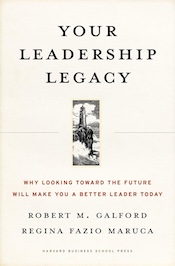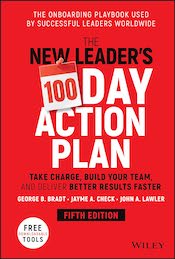
Your Leadership Legacy: Why Looking Toward the Future Will Make You a Better Leader Today
by Robert Galford and Regina Fazio Maruca
In a world obsessed with quick wins, leaders face immense pressure to focus on immediate objectives and short-term achievements. However, effective leadership is also about the long term and the impact you leave behind—your legacy. Every leader creates a legacy through their influence, whether they’re aware of it or not. It’s not just about numbers or achievements; it’s about the behaviors, ideas, and growth you foster in others.









